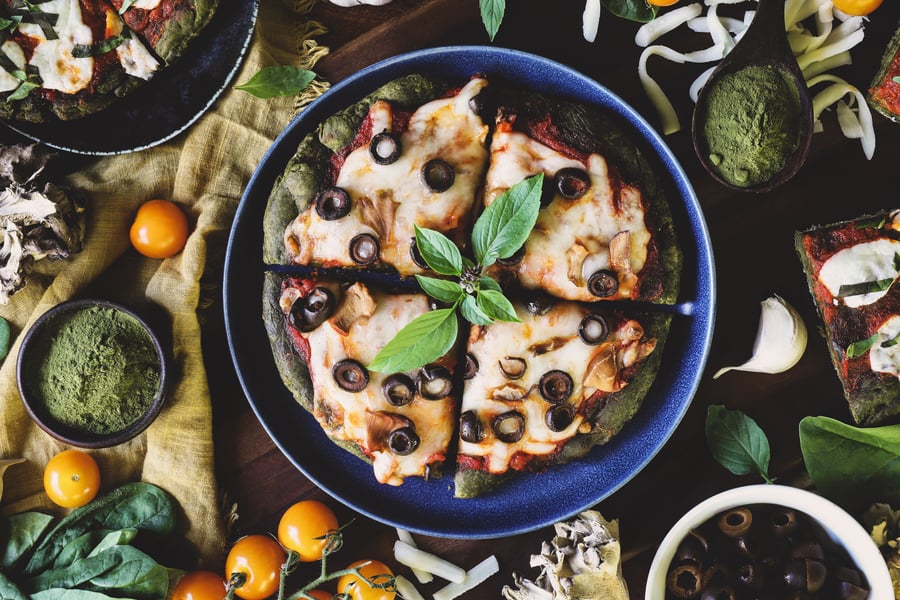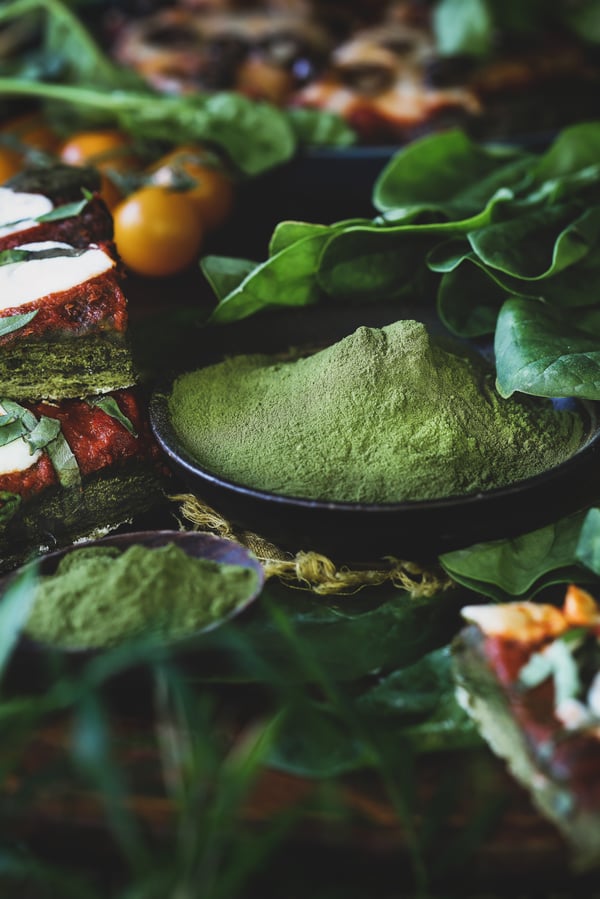Spinach has been providing humans with bountiful nutrition for more than 2,000 years. By the time this cool-season annual reached western Europe in the 11th - 15th centuries, it was already an established crop and widely cultivated in the Middle East and Asia. It has long been considered the “Captain of Leafy Greens,” which is an apt title for this vitamin- and mineral-packed veggie. However, because our bodies cannot metabolize spinach quickly, it can produce gas, bloating, and stomach cramps. This is not to say we shouldn’t eat raw spinach; we absolutely should because it’s loaded with all kinds of other essential nutrients like vitamin C, niacin, potassium, etc. that are more available to our bodies when eaten raw. But to capture all of the benefits of spinach, it behooves us to eat it in other ways as well. Dried spinach is a delicious, high-nutrition option!
Dried Spinach Nutrition
Although spinach is high in calcium, iron, and vitamins, you would have to eat more than sixteen cups of raw spinach or more than eight cups of cooked spinach to get the same amount of calcium that is in one cup of yogurt. That is a LOT of spinach, and that’s where spinach flakes and powder can help.
Raw spinach is approximately 92% moisture. When spinach leaves are dried or dehydrated properly, you lose that moisture. Studies show that, in this form, spinach retains much of its protein and fiber, as well as potassium, calcium, magnesium, iron, and antioxidants. Dried spinach also retains the carotenoids or protective compounds that support heart health and the immune system. And, because you’ve removed the moisture, you need significantly less of the dried spinach to get those nutrients than you would eating raw spinach. So you are getting the high nutrition in much smaller quantities. Nutritionally, it takes only one or two tablespoons of spinach powder to equal one cup of raw spinach!
10 Ways to Enjoy Spinach Powder and Spinach Flakes
Spinach flakes and powder can often be used interchangeably. Flakes will impart green spinach flecks in your dish whereas the powder will create a uniformly green hue. That said, there are times when one is better than the other. If you are formulating a spinach infusion or extract for wellness support, using flakes will make your life easier when it comes time to strain because powders are harder to strain out. However, if you are encapsulating spinach (another excellent way to get more spinach in your life), powder will make the process much easier. Similarly, if you want to include spinach in a body care recipe like a nourishing face mask, powder will make a smoother texture. Either powder or flakes will work in these 10 ideas:
- Pizza dough—See recipe below
- Homemade noodles
- Falafel
- Hummus
- Mashed potatoes
- Quiche
- Homemade tortillas
- Soups
- Salad dressings
- Smoothies
Mountain Rose Herbs’ Easy Spinach Pizza Dough
Makes enough dough for about (3) 10-inch pizzas.
If you use spinach powder, as opposed to flakes, this recipe makes a wonderfully green dough! This dough has a hearty texture, so expect a thick-crust pizza.
Ingredients
- 1 Tbsp. active dry yeast
- 1 tsp. organic sugar
- 1 cup lukewarm water
- 2 2/3 cups organic flour (either all-purpose or bread flour)
- 1/3 cup organic spinach powder or flakes
- 1 tsp. sea salt
- 2 Tbsp. organic olive oil (or your favorite organic cooking oil)
Directions
- Whisk yeast with sugar and water in a small bowl
- Set aside for 5-10 minutes to proof. A thick foam should form on water's surface, indicating mixture is ready.
- In a food processor, combine flour, spinach, and salt. Pulse a few times to mix.
- Stir oil into yeast mixture and add to dry ingredients in food processor. Secure lid.
- Process for at least 3 minutes. Ingredients should come together and can be formed into a ball.
- When you can touch the dough without too much sticking to your hands, shape into a smooth ball (don’t knead), place into an oiled bowl or other container, and cover with a lid, plastic bag, wax-coated sheet, or plastic wrap.
- Refrigerate for at least 4 hours, preferably overnight and up to two days before using (the longer end of this range will make for a better texture!).
- The day you plan to make pizza, remove dough from fridge and partially uncover, either leaving the bag or plastic wrap slightly open or replacing the lid with a damp towel, to allow for air circulation.
- Place dough on counter to rise for about 2 hours, or until doubled in volume. Dough is now ready to use.
Pro Tips
- For a greener crust, you can use up to 1/2 cup spinach powder. The flour and spinach powder blend should equal 3 cups total, so adjust flour accordingly.
- For more flavor, add a teaspoon or two of spices to the dry ingredients, such as garlic granules, thyme, oregano, or sesame seeds!
- If you don’t have a food processor, follow directions above through step #3. You will need to knead the dough thoroughly for at least 10 minutes (until smooth and pliable) after combining wet and dry ingredients and before refrigerating.
To Make Pizzas
- Preheat oven to 400-450°F.
- Divide dough into 2-3 pieces and roll on floured surface to personal-pizza size.
- Put pizzas on a pizza stone or large cookie sheet (about 15” x 21”), add sauce, cheese(s) and toppings to taste.
- Bake 20-30 minutes, until bottom of pizza is crisp and cheese is bubbling and slightly golden!
Want to Try Another Green Superfood Powder?
Explore Adding Organic Kale Powder to Your Diet!
You may also be interested in:
- Herbs for Health: 11 Superfood Powders to Sprinkle Into Your Diet
- Healthy Breakfast Recipes + 5 Superfood Powder Blends
- How to Make a Superfood Smoothie Bowl + 6 Recipes













